Rank Species | Genus Eryngium Higher classification Eryngium | |
Similar Eryngium, Silphium laciniatum, Ratibida pinnata, Silphium, Liatris aspera | ||
Rattlesnake master eryngium yuccifolium as companion plant at ion exchange
Eryngium yuccifolium (button eryngo, button snake-root, or rattlesnake master) is a herbaceous perennial plant of the parsley family native to the tallgrass prairies of central and eastern North America, from Minnesota east to Ohio and south to Texas and Florida, including a few spots in Connecticut, New Jersey, Maryland, and Delaware.
Contents
- Rattlesnake master eryngium yuccifolium as companion plant at ion exchange
- Rattlesnake master eryngium yuccifolium part 3
- Name
- Description
- Ecology
- Cultivation
- Uses
- References
Rattlesnake master eryngium yuccifolium part 3
Name
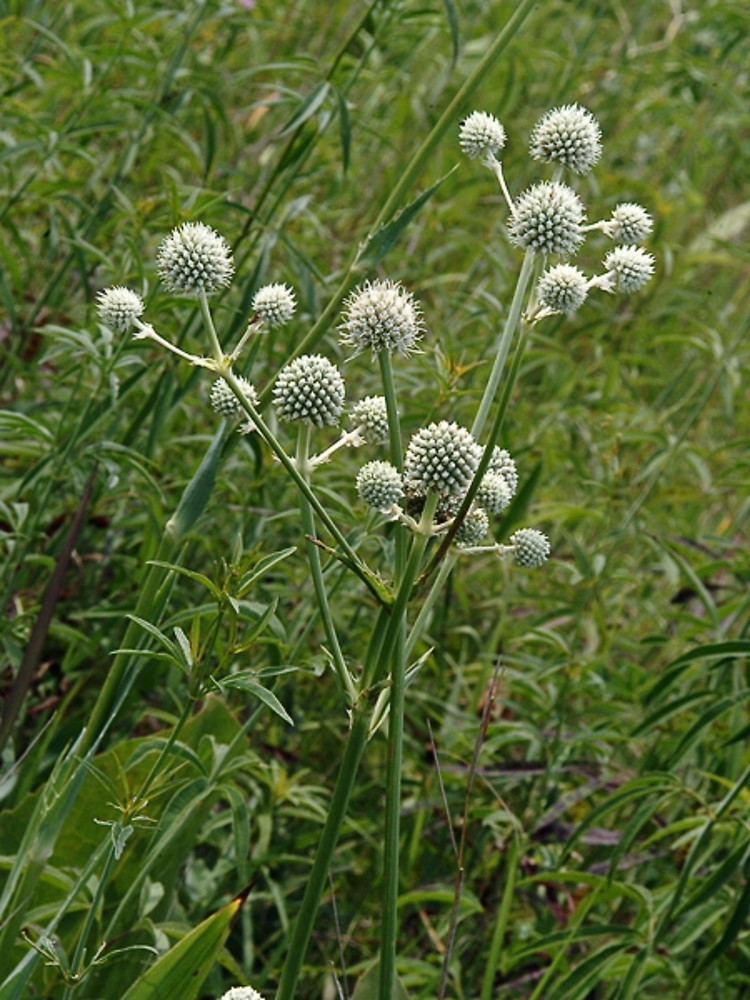
The common name comes from the fact that some Native Americans used its root as an antidote for rattlesnake venom. The species name yuccifolium "yucca-leaved" was given because its leaves resemble those of yuccas.
Description
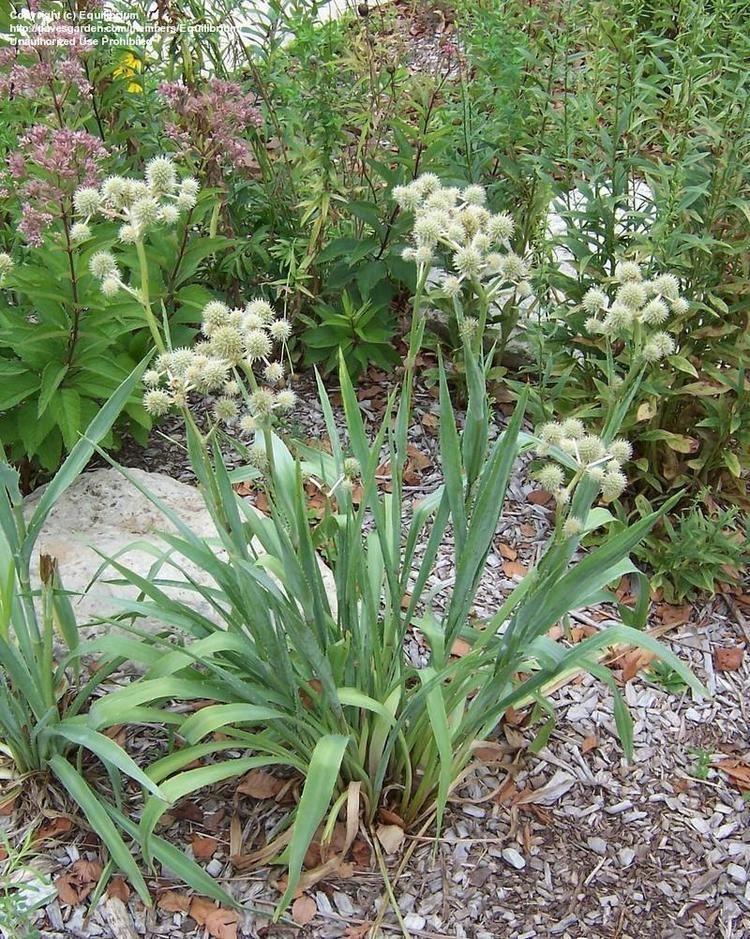
The leaves are stiff, long and narrow with a sharp tip, 15–100 cm (0–5 ft) long but only 1–3 cm (0.39–1.18 in) broad. They are bluish-green, and covered in a waxy coating. On the edges are regularly spaced bristles or spines. The root system consists of a central taproot surrounded by thick fleshy fibrous roots.
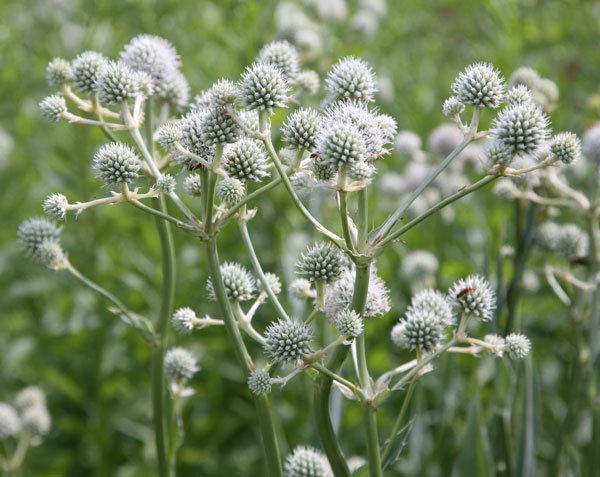
The flower clusters are produced in July and August at the end of branching stalks 1.8 m (5.9 ft) tall, 10–40 clusters per stalk. Each flower is small, 3–4 mm in diameter, and has greenish-white or bluish-white petals and a faint honey-like scent. The flowers are grouped in dense ball-shaped clusters (condensed umbels) 1–3 cm (0.5–1 in) in diameter that resemble flowerheads. Underneath each flower is a spiny green bract, and underneath each flower cluster is a small star-like rosette of spiny bracts.
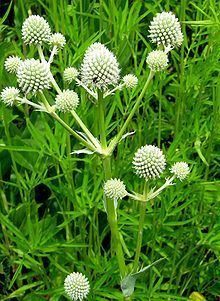
After the flowerbuds open, the pollen matures and is released two to three days before the stigmas become receptive. This encourages cross-pollination by making it unlikely that a given flower's pollen will fertilize the stigma of the same flower. Rattlesnake master has unusually high seed set (close to 90%).
Ecology
E. yuccifolium is fairly intolerant of anthropogenic disturbance, but readily re-establishes in prairie restorations.
The flowers attract many insects, including short and long-tongued bees, flies, beetles, and butterflies, but most numerous of all are wasps.
Cultivation
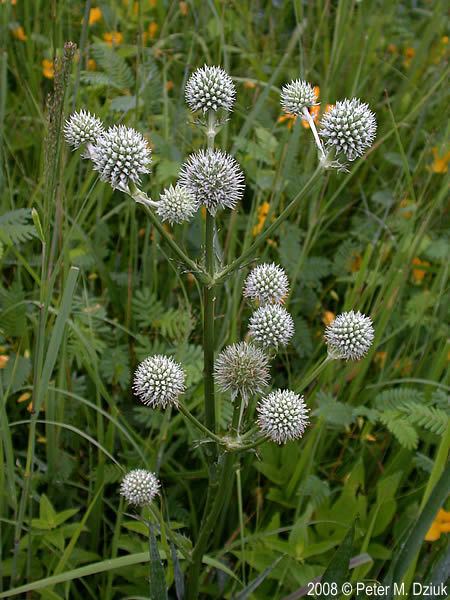
It is sold by a good number of native plant nurseries for prairie or native meadow restoration or for gardens and landscapes. Some large conventional nurseries also sell it for gardens and landscapes. It does best with full sun and well-drained soil. Slightly acidic to slightly alkaline soil reaction (pH) is best. It can die from root rot if the soil stays wet or moist for too long. Once planted it is best left undisturbed and never dug up and reset as with many perennials because it develops a large taproot and other thick, fleshy roots. It often self-sows a little to a good amount in gardens.
Uses
Fibers of rattlesnake master have been found as one of the primary materials used in the ancient shoe construction of midwestern Native Americans.
